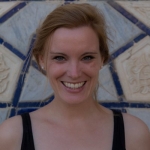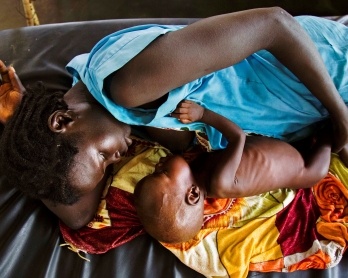Beauty within chaos
Mingkaman, South Sudan -- “I hope there are no water snakes,” I thought as my feet sunk into the muddy bottom of the river. I was balancing six kilos of camera equipment on my head with one hand, trying to keep my balance with the other, chest deep in the water, and all I could think about were the snakes.
But I’d come this far. Plus I made everyone else get up really early so we could get here in time for me to catch the nice morning light. And I really wanted to photograph in the camp. I had no other choice. On through the water I went.
I was in South Sudan, crossing a side stream of the Nile -- a small, almost stagnant arm of the mighty river -- to get to a seasonal cattle camp of the Dinka pastoralists, the largest ethnic group in the country.
 (AFP / Stefanie Glinski)
(AFP / Stefanie Glinski)In a tradition that goes back centuries, cattle keepers move closer to the Nile or swampy areas during the dry season, between November and May, so that their cows have enough to eat.
Cows are a central part of South Sudanese culture. Large animals with majestic horns, they are a symbol of status and wealth and are used to pay off dowries and to trade goods. People value them above any other possession.
I really wanted to capture the dry season tradition, which is a unique part of the year. People stay together for the duration and the camps often migrate if an area runs out of grazing land.
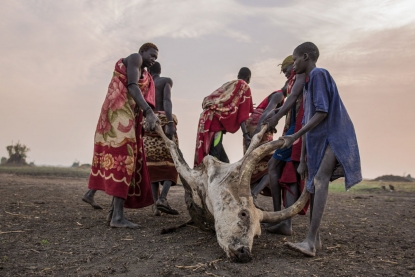 Dragging away a dead cow that was killed by a scorpion, Mingkaman, Lakes State, South Sudan on March 4, 2018.
(AFP / Stefanie Glinski)
Dragging away a dead cow that was killed by a scorpion, Mingkaman, Lakes State, South Sudan on March 4, 2018.
(AFP / Stefanie Glinski)The UN’s Food and Agriculture Organization, which works with the cattle herders throughout South Sudan, agreed to let me go along on one of their trips. So after a plane ride to Bor, then a helicopter ride to Mingkaman, then a bumpy car ride and the river crossing, I finally got there.
I ended up spending three days on the ground. We would sleep in a nearby town at night and would get to the camp in time for me to catch the soft morning light that we photographers treasure so much.
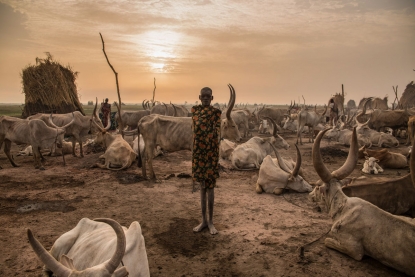 Den, 14.
(AFP / Stefanie Glinski)
Den, 14.
(AFP / Stefanie Glinski)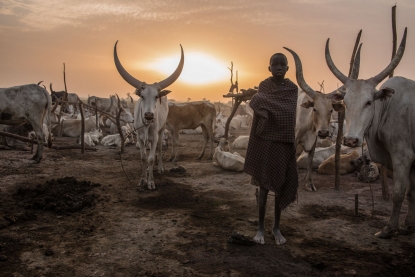 (AFP / Stefanie Glinski)
(AFP / Stefanie Glinski)
The cattle camp was in a shape of a circle and from a distance, seemed to blend in with the surroundings. At first, it’s hard to spot anything but the big, white animals.
 (AFP / Stefanie Glinski)
(AFP / Stefanie Glinski)The camp’s daily routine rarely changed. It was almost ceremonial. The people rose in the early dawn light, just as the fires lit the night before were dying out. That’s when we would arrive -- to a mix of mist, the smoke from the dying fires and the first rays of the rising sun. The ashes would be taken from the fires and rubbed into the skins of the animals and onto people’s faces -- to keep the mosquitoes away.
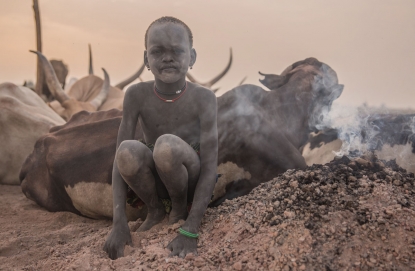 (AFP / Stefanie Glinski)
(AFP / Stefanie Glinski)The animals are then milked -- usually by women or children -- and the men take them out to graze before the temperatures reach their highs for the day, often up to 45 degrees Celsius.
With the cows gone, the camp seems empty… The children get busy collecting cow dung from the ground, which will be used as fuel for the fires in the evening. The women cook, clean and take care of babies.
We would leave the camp before darkness, as we had an hour to get back to the town where we were staying. The men would return in the late afternoon and eat with their families. In the evening, with the day’s heat gone, people usually play drums and sing, play games and tell stories.
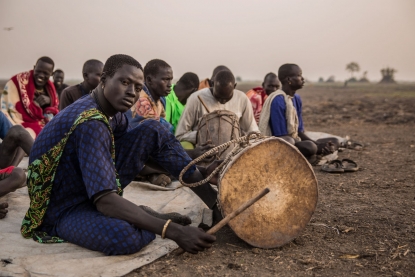 (AFP / Stefanie Glinski)
(AFP / Stefanie Glinski)In the evenings, before everyone went to bed, the fires would be lit to fend off mosquitoes and flies during the night. The people would lie down to sleep between the animals, either outside, or in simple straw huts. And we would steal away, to return early the next morning.
One night we heard sustained gunfire for a while and I lay awake for several hours, wondering if it would come closer. Later I found out that bandits had been trying to rob the town market and were chased away by the police. Security is a real problem in the cattle camps as well. Cows are valuable and so raids are common, sometimes deadly. That’s why a number of men in the camps bear arms.
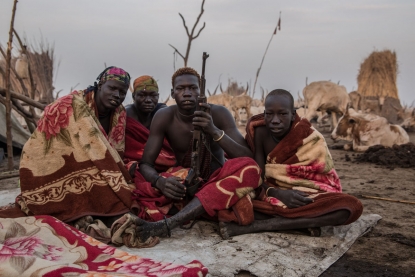 (AFP / Stefanie Glinski)
(AFP / Stefanie Glinski)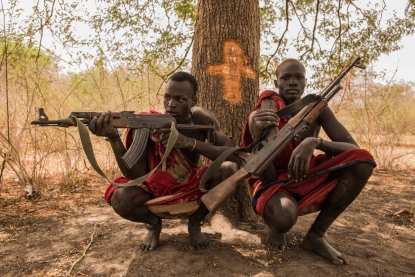 (AFP / Stefanie Glinski)
(AFP / Stefanie Glinski)
Visiting the camp was a bit like stepping into an another world. Part of the reason why I wanted to photograph it was to show another part of South Sudan, the world’s youngest nation that has been embroiled in civil war two years after it gained independence in 2011. So many people here have suffered untold misery and have seen horrific killings and destruction. But there are also beautiful things to show here.
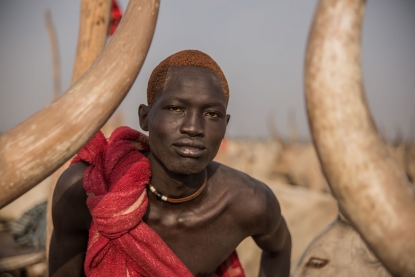 (AFP / Stefanie Glinski)
(AFP / Stefanie Glinski) (AFP / Stefanie Glinski)
(AFP / Stefanie Glinski)
The country's economy is collapsing and money is losing its worth. None of the previously signed peace agreements have been kept. Yet the South Sudanese proudly practice their culture and the cattle camps are just a profession of that -- beauty within the chaos.
This blog was written with Yana Dlugy in Paris.
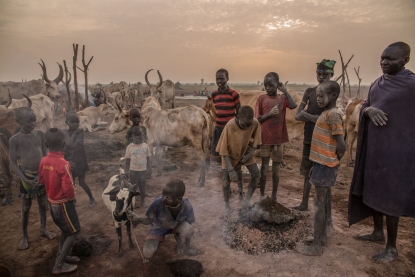 (AFP / Stefanie Glinski)
(AFP / Stefanie Glinski)


